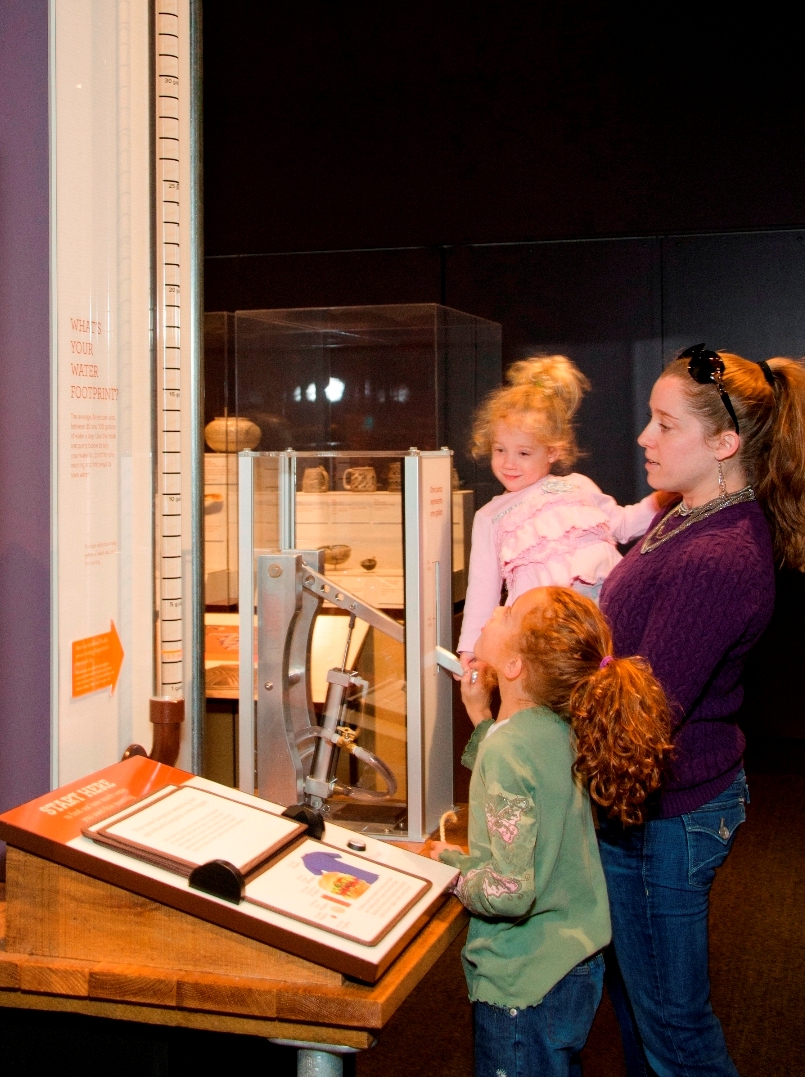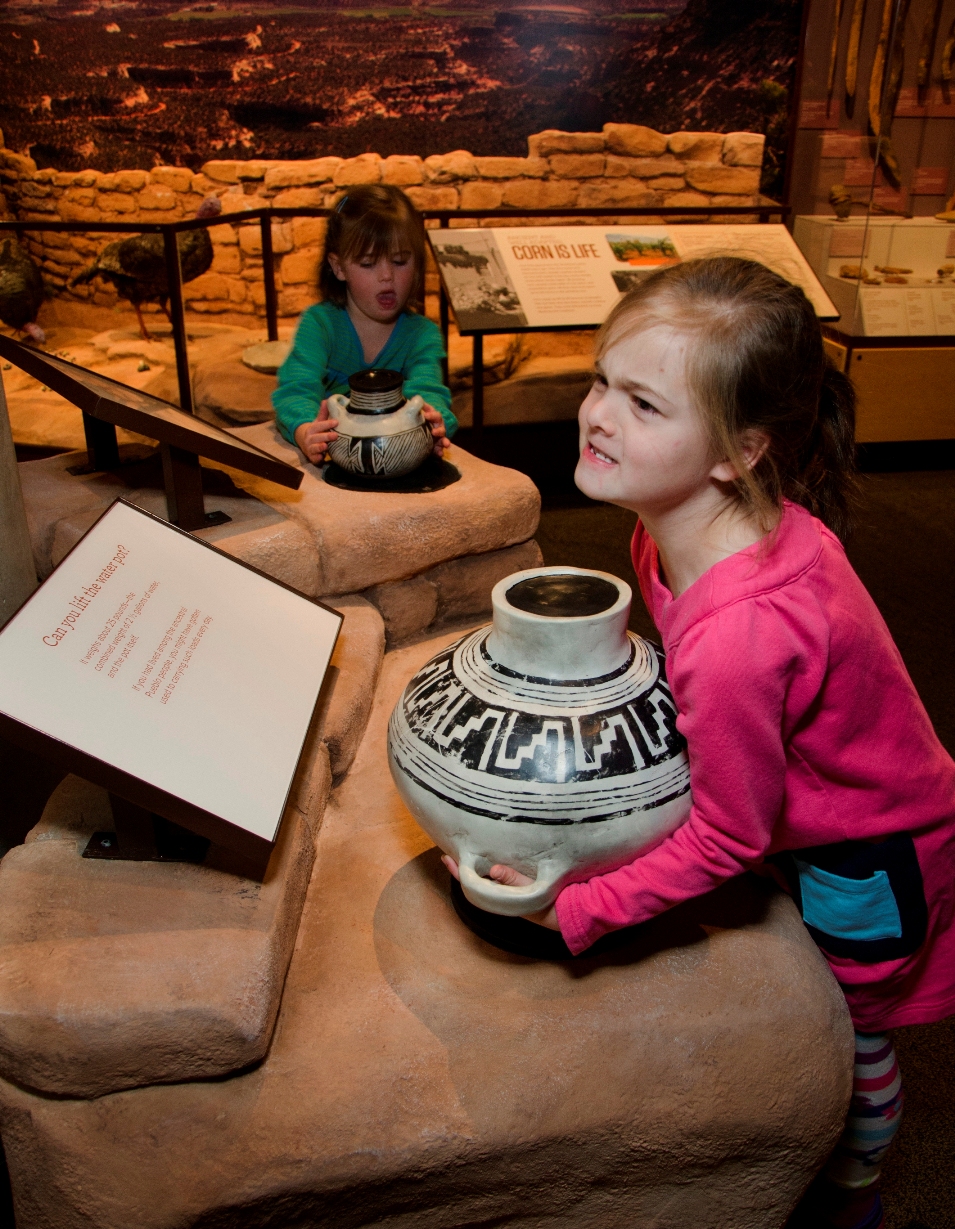Colorado’s challenging environment has shaped the state’s history and its people, and perhaps the greatest shaping factor has been water. Water has largely determined where people lived and how they survived, and water continues to challenge Coloradans today. The Living West exhibit at History Colorado invites visitors to explore three water-related chapters of Colorado’s history: Mesa Verde, the Dust Bowl, and Colorado’s Mountains. Water abundance and shortages shape all three episodes. The residents of Mesa Verde harnessed water for crops and livestock, only to experience severe drought; drought, fragile soil, volatile prices, and debt devastated many Baca County farms in the 1930s; and today we see many environmental changes in the mountains while we struggle to provide enough water for all.
Lovers of water and Colorado’s history (and present and future) will find a lot to enjoy in this exhibit. Here are seven things you won’t want to miss:
1. Measure your water footprint against an ancestral Pueblo person’s: Determine how much water you use each morning as you shower, brush your teeth, and eat your breakfast. Then pump water into a tube that compares the number of gallons you use to the average daily amount used by an ancestral Pueblo person.

How much water do you use in a morning?
Photo credit: History Colorado
2. Distribute water between the West Slope and East Slope: It’s a problem that challenges all water managers. How can we satisfy the water needs of all Colorado? Try your hand at water allocation in this interactive exhibit. Can you divert water from the Big River into a western reservoir, pump it under the mountains to Pine Lake Dam, and meet the water needs of Thirsty Town, Parched City, and Dusty Acre Farms without leaving Big City and Dry Throat Ranch high and dry? Red and green lights above each will indicate your success.
3. Challenge your friends to a knowledge showdown: Face off against two of your friends in the Summit Challenge. Answer questions about Colorado Wildlife, Conservation Choices, and Mountains Past, Present, and Future.
4. Lift a pot with a day’s ration of water for a Mesa Verde resident: The people of Mesa Verde had to haul all water for their daily use. Try to lift this twenty-five pound pot (the combined weight of the pot itself and 2.5 gallons of water) – then step back and give thanks for the ease and convenience of tap water!

Could you haul water at Mesa Verde?
Photo credit: History Colorado
5. Experience a dust storm in a Colorado cabin: Shelter in a cabin while experiencing the sights, sounds, and impacts of a Dust Bowl storm. Then step outside and determine your family’s fate.
6. Calculate how much water is in snowpack: Ice crystals take up more space than liquid water, but deep snowpack compresses the snow at the bottom. So how much water is in two feet versus six feet of snow? Turn the crank and find out!
7. Share Your Stories: Do you have an opinion on water management for the future? Do you have a story from last year’s floods? Share your thoughts in spots throughout the exhibit.
Not reason enough to go? You can also examine exquisite Mesa Verde pottery, twist your own cordage, paint a pottery design, date tree rings, discover the effects of beetle-kill, and consider the survival options for farmers in the Dust Bowl.
And don’t forget – attendees of CFWE’s President’s Award on May 2nd can tour the exhibit during the first hour of the reception. Register now and join your fellow water enthusiasts!
Have you visited the Living West exhibit? What did you think?


 Print
Print
Reblogged this on Coyote Gulch.